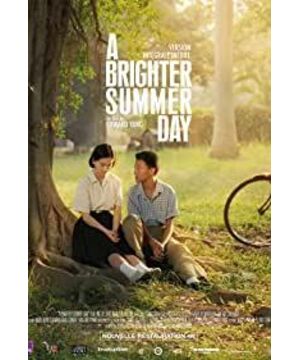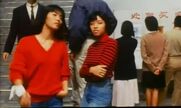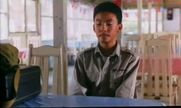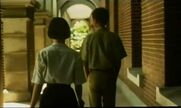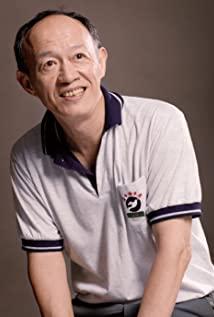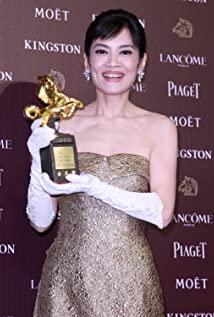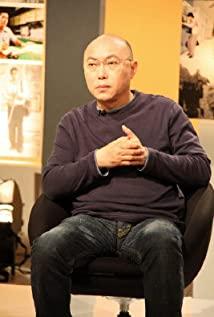Above are two screenshots of the gang fight scene in the pool hall on Typhoon Night. Yang Dechang skillfully made use of the mobility of the flashlight to realize the scene scheduling in the fixed shot. In the first screenshot, the flashlight in Xiao Si's hand shines on the wall, making the wall a reflective light source, explaining the tragic state of the room (you can see a blood-covered corpse lying under the corner of the wall. The flashlight explained the tragic situation of "Shandong"); then in the second screenshot, the flashlight illuminated the stair wall, depicting the back of Xiao Si's departure (and also laid a foreshadowing for Xiao Si's transformation), and as Xiao Si left When Si left, the room fell into darkness, suggesting the demise of the gang (the victory of the local gang over the foreign gang, here also alludes to the white terror in Taiwan at that time, Yang Dechang skillfully projected the political confrontation between the two sides of the strait into the conflict between the gangs superior).
2.
Xiao Si imitated John Wayne in the infirmary, noting that the brim on both sides of the hat was deliberately raised by Xiao Si, and then the teacher came in and smoothed the brim again. The details here and others in the film (Elvis' love for American pop songs, Pony showing off his recording equipment, etc.) depict the admiration and yearning of the younger generation in Taiwan for European and American pop culture, forming a similar relationship with the older generation. There is a cultural separation (the first half of the film is also in the infirmary, there is a scene where a school employee chats with the school doctor, and the mouth is full of Qingdao.)
The following picture shows this cultural division and contradiction more clearly:
Japanese-style house + Chinese-style furniture + American pop culture symbols (legacy of Japanese colonialism, mass immigration of mainlanders to Taiwan, European and American cultural invasion), a shot That is to say, it summarizes the cultural status quo of Taiwanese society at that time, and Yang Dechang's insight and reproduction ability are unmatched.
3.
After being dismantled by Elvis, the radio, which was working and not working, was slanted on top of the thick book. The radio broadcasts are all serious political news, which symbolizes the older generation of mainlanders represented by Xiao Si’s father, and this scene appeared before he was politically censored: the traditional culture/style that was severely damaged by European and American culture is under political censorship. Unaccustomed to the soil and water. The three clashing on a small radio is another wonderful metaphor for seeing the big from the small. Another intriguing detail in this scene is that the radio is placed in a dark corner, while a Western-style desk lamp provides light. At the end of the film, Xiao Si's father's friend went to visit Xiao Si's house, pointed to the radio and said, "It's broken... it's better to throw this useless thing away".
There are countless details like this in the film, and Yang Dechang spliced them together bit by bit to outline the outline of Taiwan at that time. It is this somewhat detailed narrative strategy that carries politics, suffering, confusion, youth, friendship, and love in an all-encompassing manner... The audience can find resonance in this film from any angle.
This directorial quality of Yang Dechang has been clearly reflected in "Terrorist": from a cold bystander's perspective (thanks to Yang Dechang's experience in the United States), the core disease of the era is exposed like a cocoon -- The alienation of people in "The Terrorist", the great social changes in "Guling Street", the confusion of the younger generation about life in "The Age of Independence" and "Mahjong", and the emotional problems of modern society in "Yi Yi". This precise grasp of the pulse of the times is one of the reasons why Yang Dechang is a master, and this is why I think "Sorrowful City", which also embodies this quality, is Hou Hsiao-hsien's best work.
View more about A Brighter Summer Day reviews


